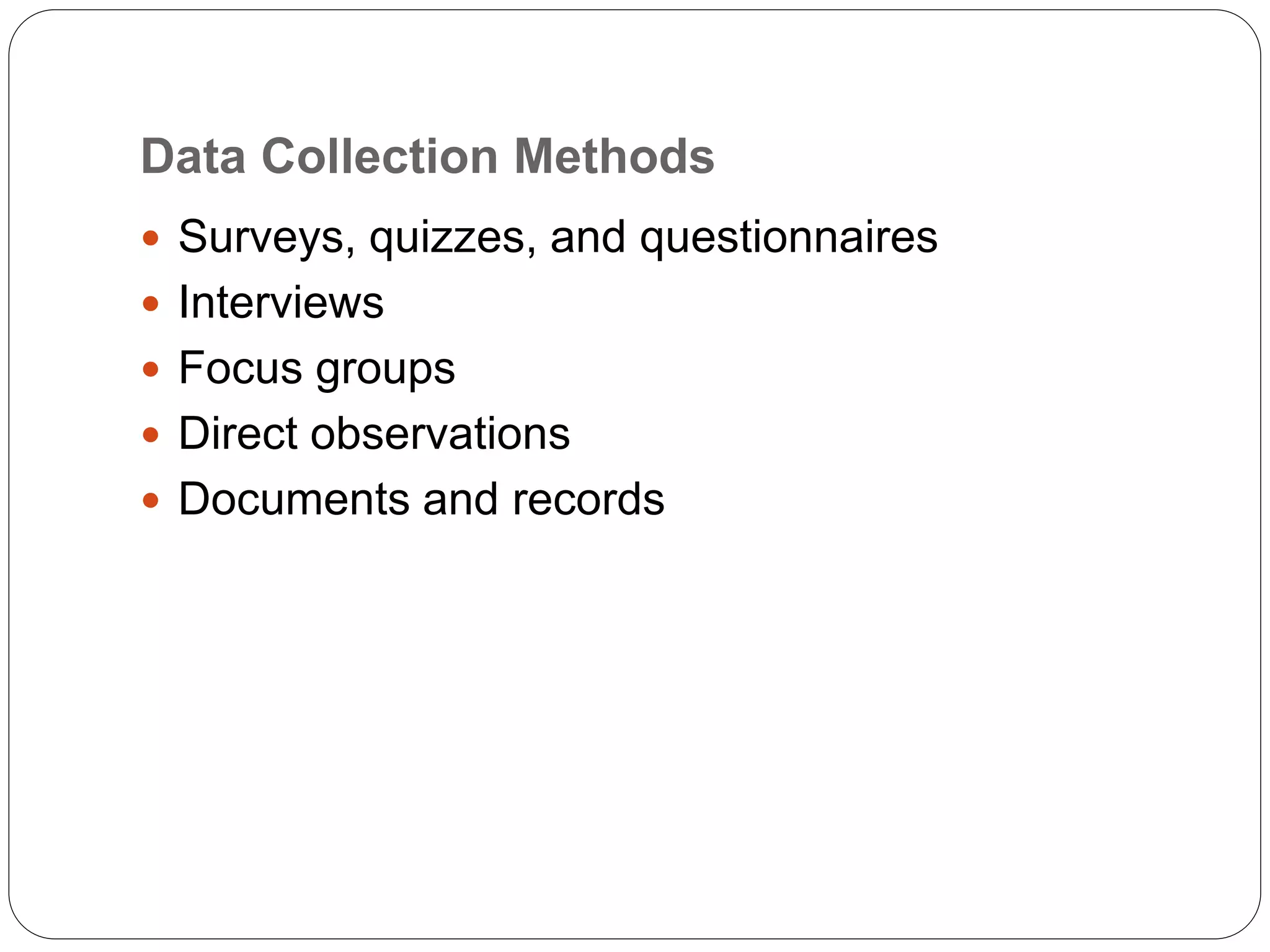The document outlines data collection methods used in quantitative and qualitative research, highlighting various tools such as surveys, interviews, and observations. It addresses the importance of validity and reliability in data collection instruments, detailing different types of validity and attributes of reliability. Additionally, it describes the differentiation between interview guides and schedules, emphasizing the structure of qualitative and quantitative interviews.






















